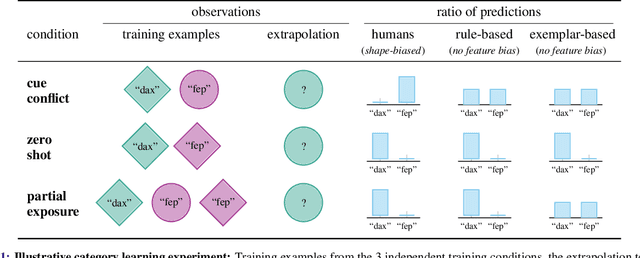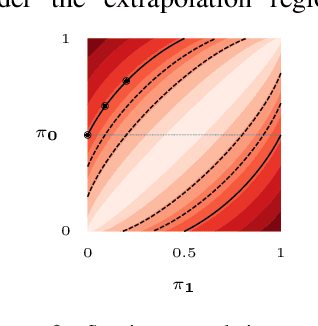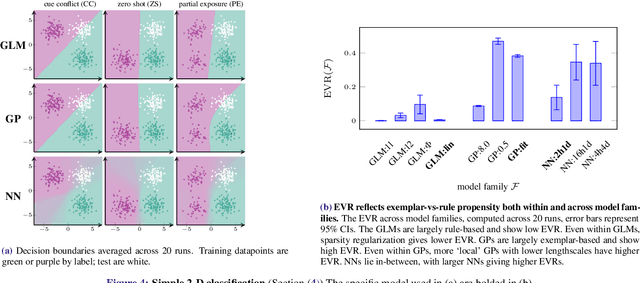Distinguishing rule- and exemplar-based generalization in learning systems
Paper and Code
Oct 08, 2021



Despite the increasing scale of datasets in machine learning, generalization to unseen regions of the data distribution remains crucial. Such extrapolation is by definition underdetermined and is dictated by a learner's inductive biases. Machine learning systems often do not share the same inductive biases as humans and, as a result, extrapolate in ways that are inconsistent with our expectations. We investigate two distinct such inductive biases: feature-level bias (differences in which features are more readily learned) and exemplar-vs-rule bias (differences in how these learned features are used for generalization). Exemplar- vs. rule-based generalization has been studied extensively in cognitive psychology, and, in this work, we present a protocol inspired by these experimental approaches for directly probing this trade-off in learning systems. The measures we propose characterize changes in extrapolation behavior when feature coverage is manipulated in a combinatorial setting. We present empirical results across a range of models and across both expository and real-world image and language domains. We demonstrate that measuring the exemplar-rule trade-off while controlling for feature-level bias provides a more complete picture of extrapolation behavior than existing formalisms. We find that most standard neural network models have a propensity towards exemplar-based extrapolation and discuss the implications of these findings for research on data augmentation, fairness, and systematic generalization.
 Add to Chrome
Add to Chrome Add to Firefox
Add to Firefox Add to Edge
Add to Edge